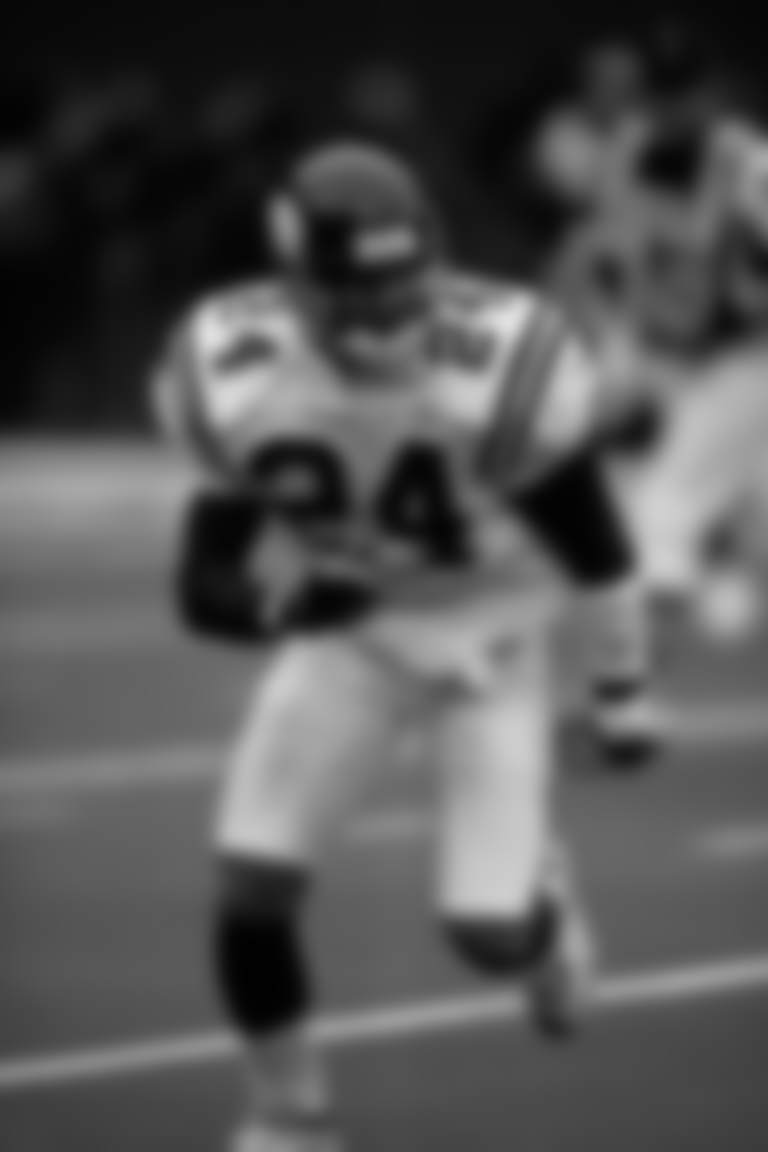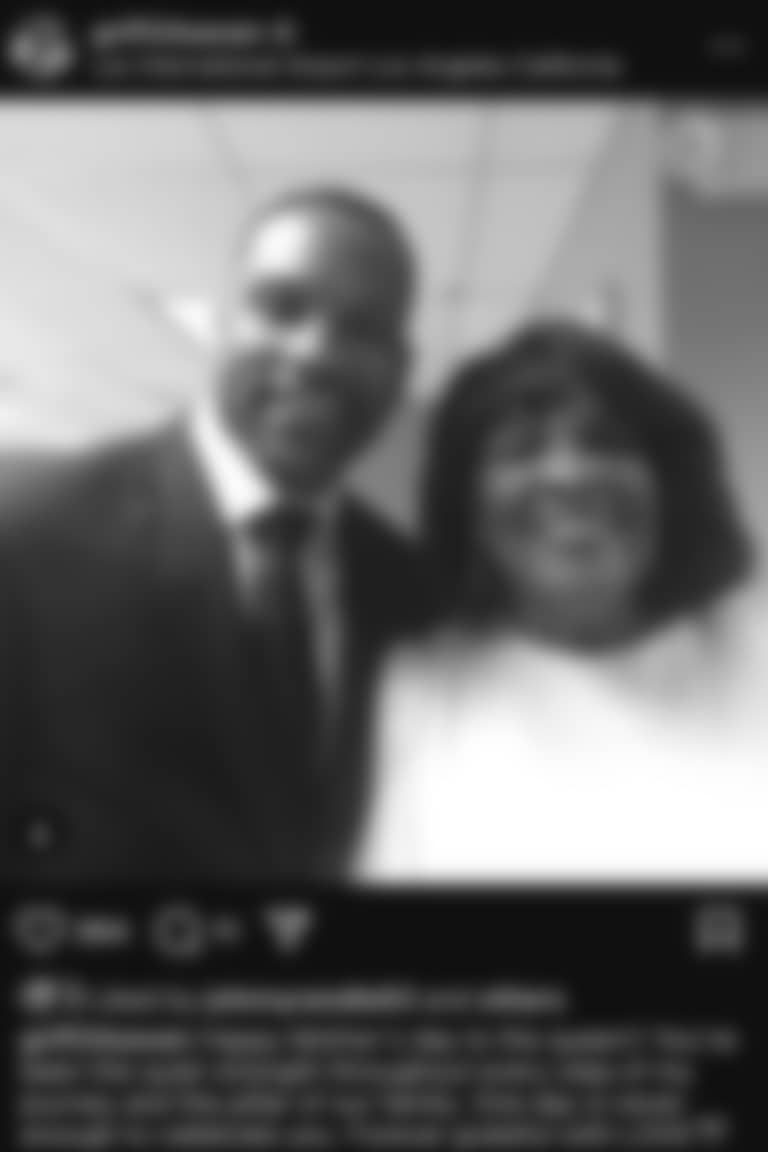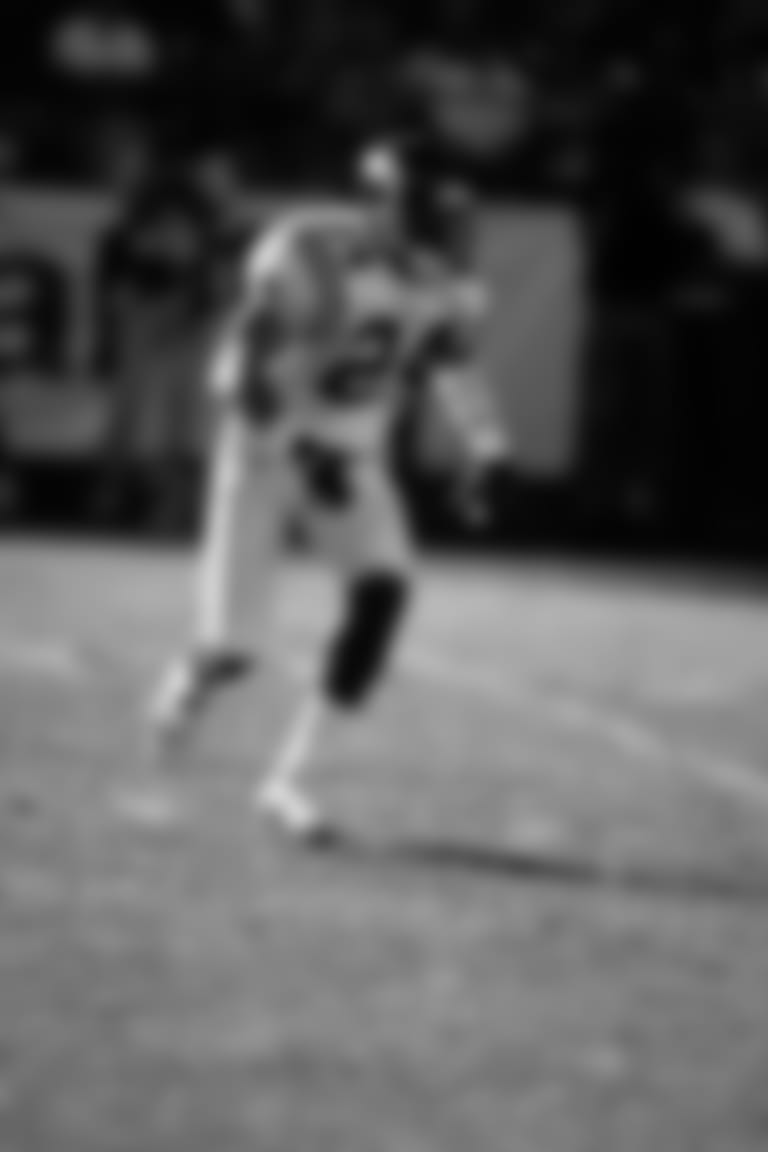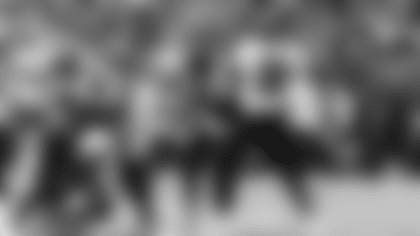Though Robert Griffith is more than 15 years removed from his NFL playing career, his fingerprints forever will remain on the league.
Griffith left an indelible impact over 13 seasons as safety on the field. But it's perhaps the six years he spent as an executive member of the NFL Players' Association that have carried even more weight.
Interestingly, the jersey number assigned him upon joining the Vikings as an undrafted free agent in 1994 set Griffith's trajectory. Being given No. 24, he found himself sitting beside running back Robert Smith, who wore No. 26, in Minnesota's locker room from day one until his final game played in Purple.
The pair of Roberts, who entered the league one year apart from one another, shared more than a first name. Griffith (electrical engineering) and Smith (a pre-med track) had excelled academically at San Diego State and Ohio State, respectively, and often dived into dialogue far beyond the Xs and Os.
"The conversations were lively," Griffith said, smiling.

He came to learn Smith had stepped into a role as the Vikings NFLPA assistant player rep in just his second season, and he often asked Smith questions about the various goings on.
"I'd come in during the first year of the free-agency system, and it was also the first year of the rookie salary cap," Smith noted. "I was among the first group of rookies to get paid less than the previous year's rookies, and I was furious about it.
"Steve Jordan was the team rep, so I was complaining to him, and he was trying to tell me some of the history. Well, when you're 21 years old, you don't want to hear that stuff," Smith continued. "He encouraged me to get involved with the union myself. So when he stepped away the following year, Jack Del Rio became the team's player rep, and I became the assistant rep.
"We really kind of initially joined the union to get the executive director fired. You know, we were like anarchists," Smith added with a laugh. "But we really found out just how wrong we were when we got into the annual meeting and they told us the union's history."
Smith came to understand the reason behind making less as a rookie in 1993 — because the NFLPA redirected money toward the retirement benefits of players who hadn't previously received benefits.
"When they started the pension fund in the mid '70s, they excluded players from before 1959," Smith explained. "Gene [Upshaw] thought that was wrong and wanted to correct it."
As he continued his heavy involvement in 1994, Smith invited Griffith to consider joining him.

"Griff' is a deep thinker. He's an honest and thorough person. So I thought he would be great," Smith said.
"I said, 'Yeah, man. Let's do it,' " Griffith recalled. "He started schooling me, sitting right next to each other on stools in the locker room."
Griffith had watched from afar as All-Pro defensive end Reggie White left the Eagles in 1993 and chose instead to play for the Green Bay Packers — a move that defined free agency and truly emboldened players who came after him to make their own career decisions. Intrigue generated by White and later fueled by conversations with Smith catapulted Griffith into the NFLPA world.
When Smith moved to the NFLPA executive committee in 1995, Griffith moved from Smith's alternate to Minnesota's new player rep for the next two seasons.
It wasn't a popular position to hold.
"I'm an undrafted rookie, right? So I'd just made the team, and I think it was Week 9 or 10 when Robert named me alternate rep," Griffith said. "And guys were like, 'OK, you bold little rookie.' "
He also was viewed less than favorably by some coaches, who were required by the NFLPA to cut down on the number of hours players were on the field. Then, the number of padded practices that were allowed.
"There were all these different things we were putting in place so guys weren't just getting beat up … and some coaches would try to bend the rules," Griffith said. "They're starting to look at me a certain type of way, you know? It was like, you either had to be a really good player they could not cut … and you had to really have some [courage]."

From walk-on to Pro Bowler
Griffith was never supposed to end up in the NFL.
At least, not if he'd been the type to take a backseat when cards are stacked against you.
But when faced with difficult circumstances, Griffith only worked harder.
A scrappy defender who started his collegiate career at San Diego State University as an undersized walk-on cornerback, he was determined to succeed — on the football field, in the classroom, in life.
As an Aztecs freshman, Griffith set his alarm for 4:30 a.m. each day for his job as an assistant delivering beer.
"I wasn't even driving a truck," he recalled with a soft chuckle. "I was just helping. I'd deliver beer at restaurants and supermarkets until 8:30 in the morning."
Griffith then attended classes from 9:30 to 1 p.m., after which he hurried to get ready for practice.
Rinse, repeat. Rinse, repeat. The rigorous routine took its toll over a series of months. Then, he broke his forearm right before the start of his sophomore season.
"I wasn't on scholarship. I needed to work. But I couldn't do the delivery job anymore with a broken arm, and it was all a mess. I thought football was over," Griffith said.
It would have been, had it not been for his mother, who scraped together enough money to pay for that semester's tuition. (He would later find out she'd sacrificed immensely and sold valuables to make ends meet for her son.)

Grateful, relieved and as determined as ever, Griffith wore a brace on his arm and played through the injury en route to earning a scholarship that changed everything.
"That saved me. It literally saved my football career, all my dreams, everything," he said. "That scholarship is the only reason I could keep playing ball."
Though he started three seasons, served as a team captain and was named Second-Team All-WAC following an outstanding performance during the 1992 season, Griffith went undrafted following his SDSU career.
Again, the odds were stacked against him.
Griffith dived back into the workforce for a year while seeking out ways to return to the sport he loved. During that time, AAU basketball coach Bill McCullough stepped in and called around to various connections, one of which led to an opportunity for Griffith with the Canadian Football League's Sacramento Gold Miners.
But after a series of events — "It's a crazy story," Griffith quipped — he never did suit up for the Miners, instead staying in San Diego to finish his degree in electrical engineering and focus on training. Every day by 1:30 in the afternoon, he hit the track oval with Aztecs track-and-field coach Rahn Sheffield and the Olympic athletes he prepared.
Griffith finally was noticed by Gary Zauner, who recently had accepted the role of Vikings Special Teams Coordinator back in Minnesota.
"He recruited me to play for him at the University of New Mexico. He also had seen me play in college, coached against me in college," Griffith explained. "I worked out for him, and he wanted to sign me."

Zauner stood on a table for Griffith, and Minnesota signed the defensive back as an undrafted free agent in 1994.
All he'd ever asked for was a chance, and Griffith once again made the most of it.
He bided his time the first two seasons, impressing on special teams and serving as a backup to veteran safeties Todd Scott and Vencie Glenn, all while learning all he could about the NFLPA through conversations with Smith. Then in 1996, Griffith exploded on the gridiron as a full-time defensive starter who racked up 96 tackles and snagged four interceptions.
Longtime NFL fans will know the rest. Griffith went on to play a significant role for Minnesota, starting 88 games and picking off 17 passes; he recorded 645 tackles, 7.5 sacks, 20 tackles for loss, seven forced fumbles and 19 passes defensed.
Griffith was named Second-Team All-Pro by The Associated Press twice (1998 and 1999) and received a Pro Bowl nod after the 2000 campaign. Following his time in Purple, he played three seasons for the Browns and his final two with the Cardinals. The Vikings during his tenure reached the postseason 10 times, including the NFC Championship Game twice, and won the division two times.

Griffith's on-field contributions were undeniable, going down as a Vikings fan favorite and officially retiring with the franchise in 2008.
And while he'll always be proud of his Vikings football career. But he's equally proud of — and maybe more so — of the overall impact he made on the league.
'Slice of the NFL'
Griffith in 1997 joined Smith on the NFLPA Executive Committee, where the two worked alongside Upshaw, Trace Armstrong and Troy Vincent (currently the NFL's Executive VP of Football Operations) to ensure a fair and favorable working atmosphere for players.
After the NFLPA created a new Collective Bargaining Agreement in 1993 that implemented the modern-day free agency system, improved player retirement plans and increased minimum playing salaries, Griffith and the rest of the union's leadership committee went on to sign five different extensions.
"We kept [extending] until we got where we really wanted," he said, noting the NFLPA's 2006 extension. "I truly believed in the five CBA agreements I was a part of. We gained a little more revenue share; we were able to add some significant pieces along the way, like health and medical savings account, 401K, [and] we reached back and really made it better for the former players, as well, every time."
He and Smith remember the difficulty of presenting to peers and coaches the short-term changes that would have long-term impacts.

"They weren't easy meetings, to make the vote as a group of representatives or to take that message back into the locker room, but that's what leadership is," Smith said. "They say, 'When you want to help people, you tell them the truth; when you want to help yourself, you tell others what they want to hear.' I truly believe that those difficult messages are just a part of being a strong leader.
"Johnny Randle is one of my good friends to this day, and Johnny would stand up at the back of the meetings and yell all kinds of things to harass me," Smith added good-naturedly. "But that was fine, you know, as part of the deal. And if I couldn't thoroughly explain the reasons behind the things that we did, then I didn't deserve that position. And we were happy to do it."
Griffith pointed to "a lot accomplished" during those years.
"Players went from employees to partners," Griffith said. "I believe now that the NFL is a true partnership. Safety around the game, the health of players. … Those are the foundations we helped set in the late '90s and into the 2000s that have set the table for now.
"I have my little slice of NFL history," he added, smiling. "My mom calls it a 'plaque on the wall,' 'a feather in your cap,' whatever you want to call it. I feel really good about my little slice of NFL history."

Griffith enjoys following the current Vikings and returning to Minnesota — preferably during the warmer months — to reconnect in-person with Smith and other Vikings Legends.
"Griff' is like a brother to me," Smith said. "He really flourished, you know? He became a leader inside that locker room and outside that locker room. I was sitting next to him the whole time … and we really developed together. He's just one of those people who is sincere, intelligent, thoughtful and is always looking for a way to help somebody else."
When the friends step on the field of U.S. Bank Stadium and watch players sprint through the tunnel, they find gratification in how their work continues to have a positive influence.
"Coming back over the years, and the Wilf [Family Ownership Group] and everything they've also done … I think the Vikings organization is the best in the business," Griffith said. "I'm so glad I'm a part of it — and that it really is this beautiful partnership between the league and the players."
________________________________________
Click here to learn more about Griffith's off-field work that includes the Robert Griffith Foundation, established in 1998 and still functioning to provide academic scholarships for high school seniors in need.






